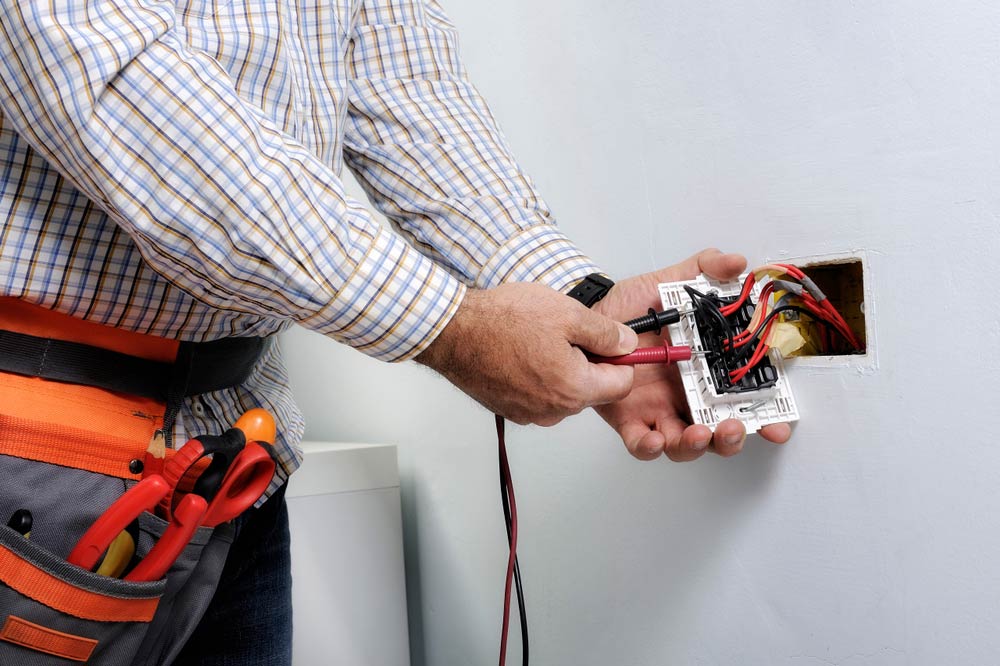Tailored BRE Electrical Solutions for Homes and Businesses
Tailored BRE Electrical Solutions for Homes and Businesses
Blog Article
The Ultimate Overview to Electric Setup: Tips and Techniques for a Safe and Effective Home Wiring System
In the world of home upkeep, few elements are as vital yet often neglected as the electric circuitry system. By discovering the nuances of electrical safety and security steps and energy-saving practices, this comprehensive overview will shed light on the ins and outs of home wiring, empowering individuals to take charge of their household's electric framework.
Comprehending Electric Precaution
To make sure the safety of both people and building, understanding and carrying out proper electrical safety and security steps is paramount in any type of home circuitry job. It is crucial to perform a complete evaluation of the electrical system before starting any kind of electrical wiring task to determine prospective hazards or issues that need to be addressed.
Moreover, making use of the appropriate devices and equipment is important for preserving safety and security during electrical setups. Shielded handwear covers, voltage testers, and protective glasses are some of the basic security equipment that ought to be put on to stop electric shocks or crashes. It is also essential to de-energize circuits prior to working on them and to classify all circuits and breakers clearly to stay clear of confusion.

Essential Tools for Home Electrical Wiring
Making certain the correct execution of electrical safety and security actions in home circuitry jobs involves utilizing a details collection of vital devices designed to assist in the installment process efficiently and safely. Some of the secret devices needed for home wiring projects include a voltage tester for checking online cables, cord strippers for removing insulation from cables, a cable cutter for specifically cutting cables to length, a screwdriver established for protecting electrical components, electrical tape for insulation and securing connections, a cord ripper for stripping cable television sheathing, and a multimeter for determining voltage, present, and resistance.
Step-by-Step Electrical Installation Guide
Starting an electrical installation project requires precise planning and adherence to security standards. Prior to starting any kind of work, guarantee you have a detailed strategy outlining the format of the electric system, including the positioning of electrical outlets, buttons, and fixtures. Take into consideration the power demands of each gadget to identify the suitable wire scale and breaker dimensions.
The initial step in the installment procedure is to shut off the power supply to the location where you will be working. Make use of a voltage tester to verify that the circuits are de-energized before touching any cables. Next, carefully remove existing fixtures or outlets and detach the cords.
When mounting brand-new circuitry, run cords with walls and ceilings, protecting them in position with ideal installations. Adhere to neighborhood building regulations and maker directions for proper cable installment and links. BRE Automation Australia. Ensure to classify cables for easy identification and future read review upkeep

Troubleshooting Common Electrical Wiring Issues
Having finished the setup process as laid out in the previous subtopic, fixing learn this here now usual circuitry issues is a vital skill for making sure the security and performance of your electrical system. One usual concern is a tripped circuit breaker, often triggered by overloaded circuits or a short circuit. To troubleshoot this, situate the breaker panel, determine the stumbled breaker by seeking the one not fully in the "on" setting, and reset it by turning it totally to "off" and afterwards back to "on." Another prevalent problem is a faulty electrical outlet, defined by no power or intermittent power supply. Ensure the electrical outlet is not managed by a button, then use a voltage tester to examine for power. If there is no power, switch off the circuit, inspect the circuitry connections for any loosened or damaged cords, and replace the outlet if essential. Continually flickering lights can show loose wiring connections or an overloaded circuit. To resolve this, check and tighten up all cable links in the influenced components and switches and redistribute the load on the circuit to stabilize the electric demand. Regularly examining and quickly resolving these usual circuitry problems will certainly preserve the security and efficiency of your home electrical system.
Tips for Energy-saving Electric Equipments
For optimal power effectiveness in electrical systems, implementing clever practices and making use of energy-saving modern technologies is paramount. One key idea for attaining an energy-efficient electric system is to upgrade to LED lighting. Correct insulation and securing of windows, doors, and electrical outlets can additionally protect against power loss, eventually minimizing the work on electrical systems.
Final Thought
To conclude, executing proper precaution, using necessary tools, complying with a detailed installation guide, fixing common problems, and including energy-efficient pointers are essential for a secure and my site efficient home electrical wiring system. By sticking to these practices, property owners can make sure the long life and functionality of their electrical installments. It is essential to focus on safety and security and efficiency when it involves electrical work in order to avoid possible risks and to keep a reputable electrical system in the home.
Report this page